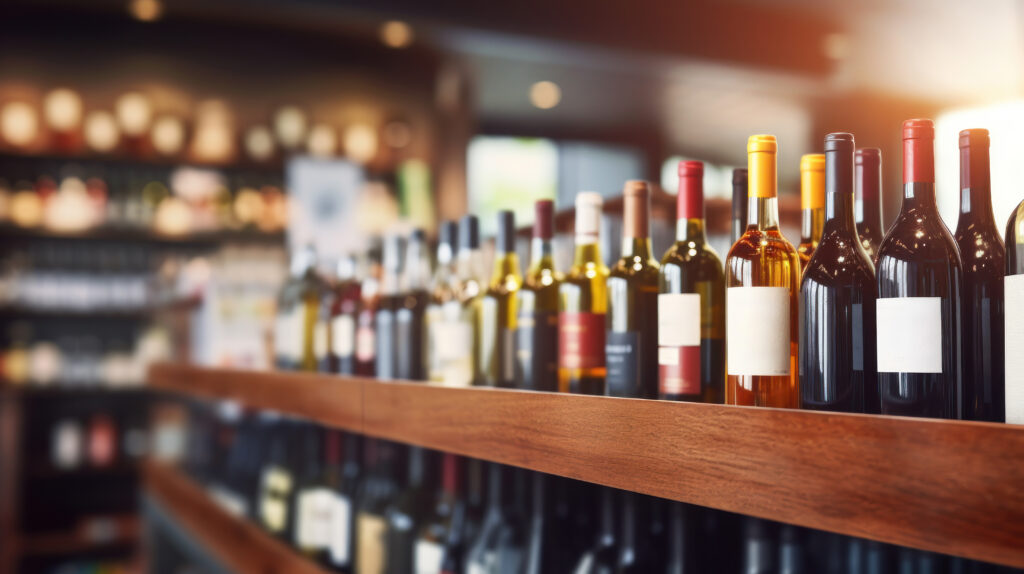Бизнес-планирование и стратегия,Финансовые модели
Бизнес магазина спиртных напитков: затраты, потенциальный доход и прибыльность
Магазин по продаже спиртных напитков работает в регулируемом потребительском сегменте с большим объемом продаж, где прибыльность зависит от оптимизация маржи категории, скорость инвентаризации, и эффективность работы. Хотя валовая прибыль варьируется в зависимости от линейки продуктов, сильный денежный поток и повторный трафик делают эту модель привлекательной. Успех обусловлен Ассортиментная дисциплина, рычаг влияния поставщика, и жесткий контроль затрат, особенно в юрисдикциях с большим объемом лицензирования.
Конфигурация активов
CapEx умеренный, инвестиции сосредоточены на стеллажах, холодильном хранении и инфраструктуре безопасности. Типичный магазин охватывает От 800 до 2500 кв. футов., с дополнительным хранилищем в зависимости от объема и активности поставок.
| Категория актива | Диапазон стоимости (долл. США) | Примечания |
|---|---|---|
| Стеллажи, стойки, витрины | 30 000 - 60 000 | Настенные стеллажи, гондолы, фирменные холодильники |
| POS, инвентаризация и проверка личности | 5000–10000 | Системы возрастного контроля, CRM, акции |
| Оборудование для безопасности и наблюдения | 10 000–20 000 | Камеры, противоугонные, ударопрочное стекло |
| Брендинг, отделка, вывески | 10 000–20 000 | Витрины, освещение, визуальный мерчандайзинг |
| Открытие инвентаризации | 150 000 до 300 000 | Крепкие напитки, вино, пиво, RTD, аксессуары |
Общие капитальные затраты: 205 000–410 000 долларов США, в первую очередь обусловлено инвентарем и приспособлениями. Государственные лицензии и разрешения различаются, но могут добавить 5000–20000 долларов США авансом.
Модель дохода
Доход формируется на основе транзакций, при этом средний размер корзины составляет от 25–60 долларов США, в зависимости от рынка и ассортимента. Основные драйверы маржи включают частные торговые марки, ограниченные выпуски, и упаковка с добавленной стоимостью (например, подарочные коробки, пробники). Повторная посещаемость высока, особенно среди покупателей пива и вина.
Потенциальный годовой доход для местного магазина спиртных напитков площадью 1500 кв. футов
| Поток доходов | Предположение об объеме | Годовой доход (долл. США) |
|---|---|---|
| Крепкие напитки (виски, водка, ром и т. д.) | 25 000 транзакций по средней цене 40 долларов США. | 1,000,000 |
| Вино | 15 000 транзакций по средней цене 30 долларов США. | 450,000 |
| Пиво и RTD-напитки | 20 000 транзакций по средней цене 25 долларов США. | 500,000 |
| Аксессуары, миксеры, подарочные наборы | 1000 в неделю в среднем. | 52,000 |
| Онлайн-заказы и местная доставка | 1200 в неделю в среднем. | 62,400 |
| Общий | 2,064,400 |
Городские магазины с высокой проходимостью и оборотом продукции могут превышать 3,5 миллиона долларов США Ежегодно. Пригородные торговые точки с низкой пропускной способностью без поддержки доставки часто остаются ниже 1,2 млн долларов США.
Эксплуатационные расходы
COGS различается по категориям: пиво имеет низкую маржу, крепкие напитки — более высокую, а аксессуары имеют самую высокую наценку. Труда мало, но безопасность, убыль и контроль соответствия имеют решающее значение. Инвентарь должен строго контролироваться, чтобы избежать связывания наличных в низкооборотных SKU.
| Категория стоимости | Годовой диапазон расходов (долл. США) |
|---|---|
| Стоимость проданных товаров | 1 150 000 до 1 250 000 |
| Заработная плата и фонд оплаты труда персонала | 180 000 - 220 000 |
| Аренда, коммунальные услуги, страхование | 160 000 - 200 000 |
| Маркетинг, лояльность, работа с сообществом | 60 000 - 80 000 |
| Безопасность, Лицензии, Соответствие | 45 000 - 65 000 |
| Усушка, разливы, списание по истечении срока годности | 25 000–40 000 |
| POS, CRM, Администрирование, Тех. | 20 000 - 30 000 |
| Общие эксплуатационные расходы | 1,640,000 до 1,885,000 |
EBITDA = 2 064 400 – 1 640 000 до 1 885 000 = 179 400–424 400 долларов США
Маржа EBITDA = 8.7% до 20.6%
Хорошо управляемые магазины с сильным миксом собственных торговых марок, жестким контролем затрат и доставкой могут постоянно поддерживать маржу около 15–20 процентов. Недооптимизированные магазины с плохой оборачиваемостью запасов или неэффективностью соблюдения нормативных требований рискуют опуститься до однозначной цифры.
Стратегии прибыльности
Рентабельность розничной торговли спиртными напитками зависит от категория маржинального стекирования, скорость пропускной способности и лицензионная дисциплина.
Начать с многоуровневый ассортимент. Используйте бренды с высокой скоростью продаж (например, Tito's, Jameson, La Marca) для привлечения трафика, а затем продавайте товары премиум-класса или под собственной торговой маркой с наценкой. на 20–30 процентов выше. Ограничьте раздувание ассортимента, особенно в отношении вина и готовых к употреблению напитков, и отдавайте приоритет товарам с оборачиваемостью 60 дней и более.
Максимизируйте прибыльность на корзину за счет размещение продукта и импульсная стратегия. Продвигайте наборы (например, текила плюс миксеры), размещайте товары с верхней маржей на уровне глаз и используйте напольные дисплеи для сезонных ротаций. Целевые показатели прикрепления аксессуаров 20 процентов или выше.
Защитите маржу полной цены, избегая глубоких акций. Вместо этого предложите эксклюзивные дегустации, баллы лояльности или предварительные заказы небольшими партиями. Используйте кооперативное финансирование поставщиков для кампаний и продвигайте доставку как нейтральную по марже дополнительную продажу.
Инвестируйте в проверка возраста, инструменты соответствия, и цифровые протоколы лицензирования, чтобы избежать нарушений и штрафов. Они не подлежат обсуждению в розничной торговле алкоголем и должны быть заблаговременно заложены в бюджет.
Наконец, ежемесячно отслеживайте убыль и поломки. Внедрите обучение по предотвращению потерь и ротацию продуктов для устаревших запасов. Установите точки повторного заказа и минимальные продажи для поддержания гибкости запасов.
Ну и что?
Магазин спиртных напитков не является товарной точкой – это многоуровневая маржинальная машина, ориентированная на соответствие требованиям. Рентабельность зависит от того, насколько хорошо оператор контролирует ассортимент, ротирует продукцию и наращивает ценность посредством объединения и удобства. Розничные торговцы, которые реализуют жесткую стратегию категории, защищают премиальные цены и оптимизируют пики в четвертом квартале и на выходных, могут выдержать Маржа EBITDA от 9 до 20 процентов на более 2 миллионов долларов США дохода, с Капитальные затраты менее 410 000 долларов США.

Вы рассматриваете возможность открытия своего бизнеса в сфере продажи спиртных напитков? Загрузите комплексное Ликер Шаблон финансовой модели магазина от ЛИСТЫ.РЫНОК для упрощения вашего финансового планирования. Этот инструмент поможет вам спрогнозировать расходы, доходы и потенциальную прибыль, упростив получение финансирования и планирование успеха для вашего бизнеса в сфере продажи спиртных напитков.



